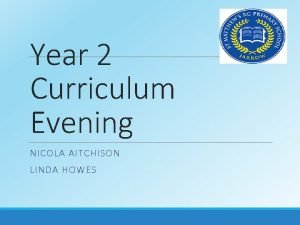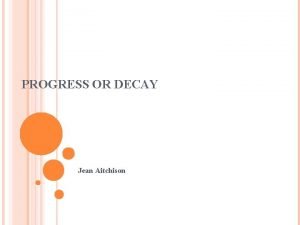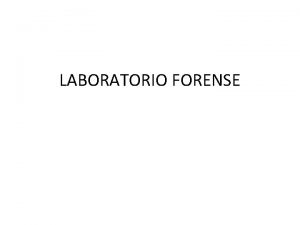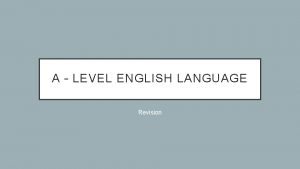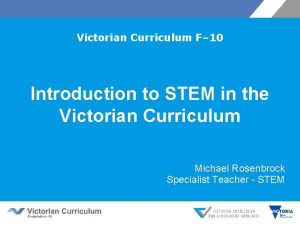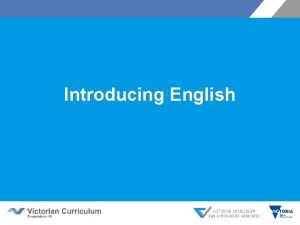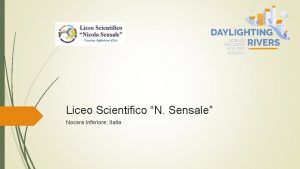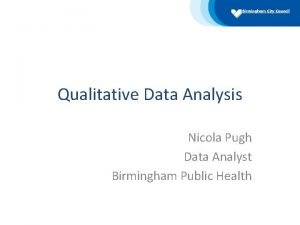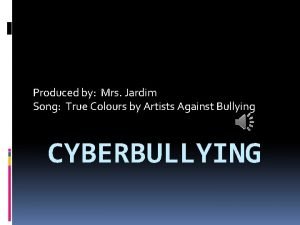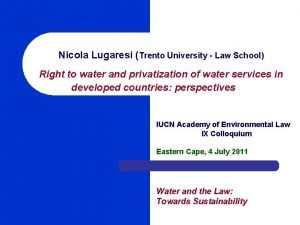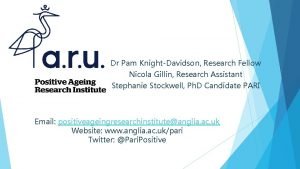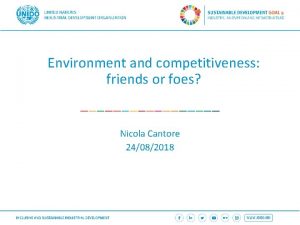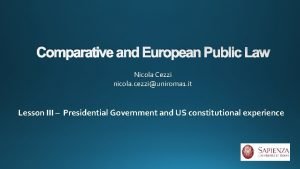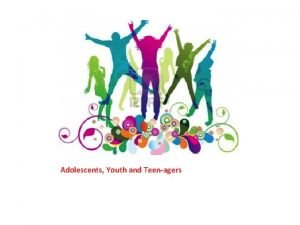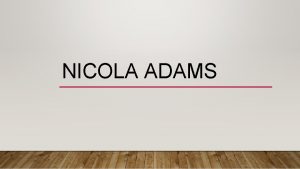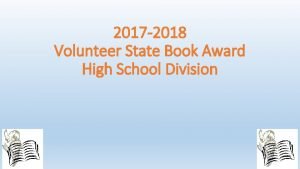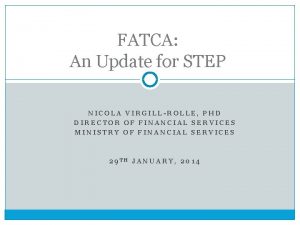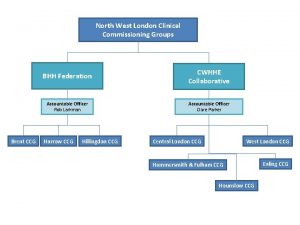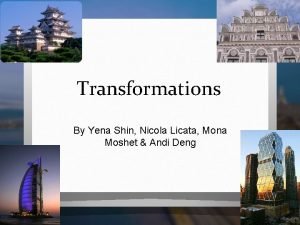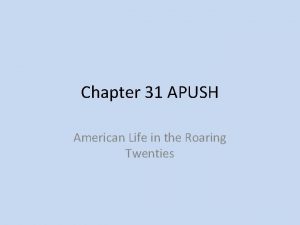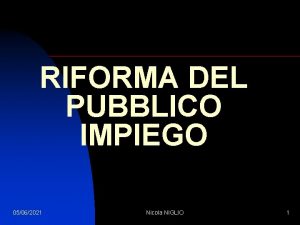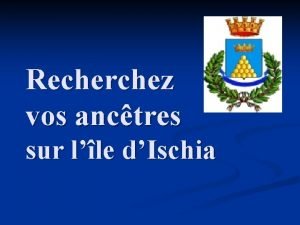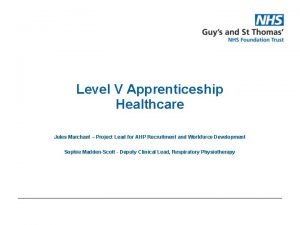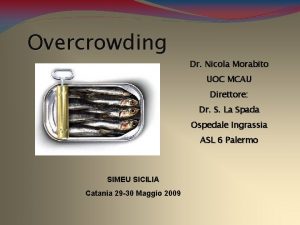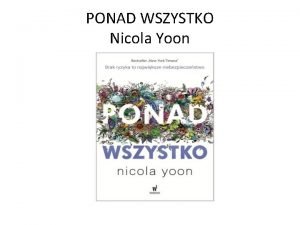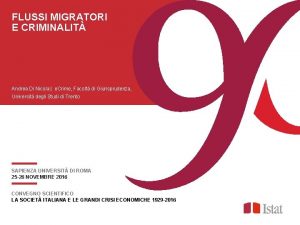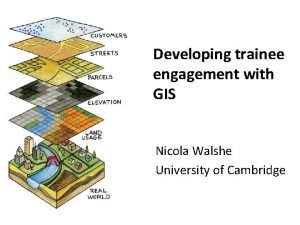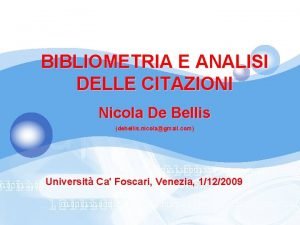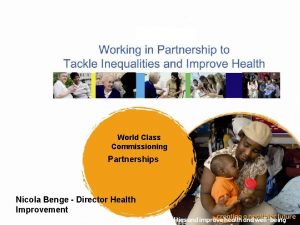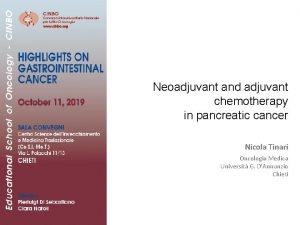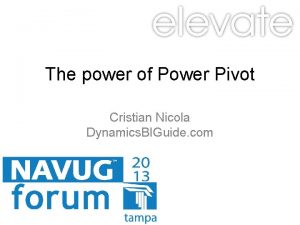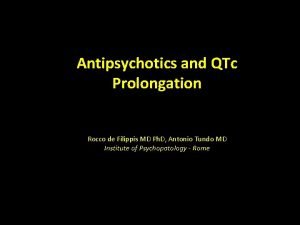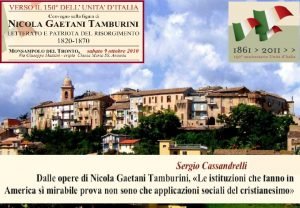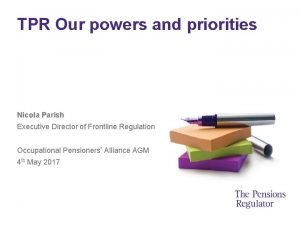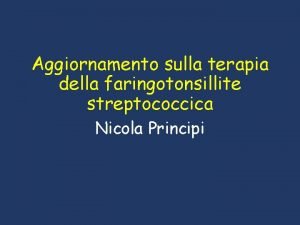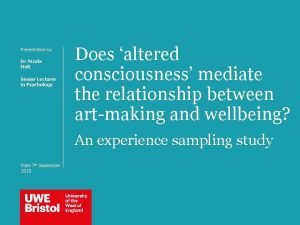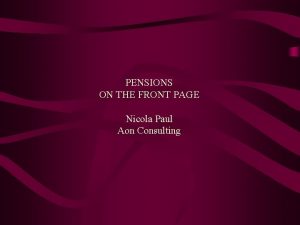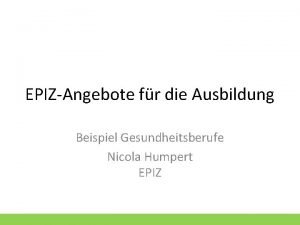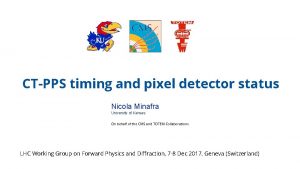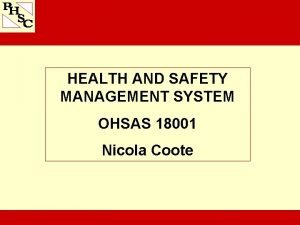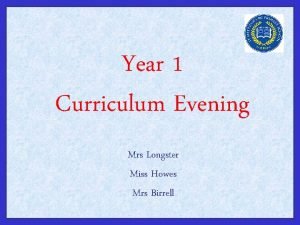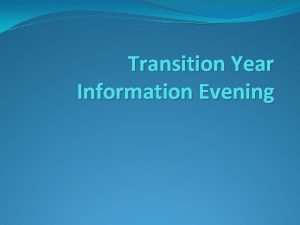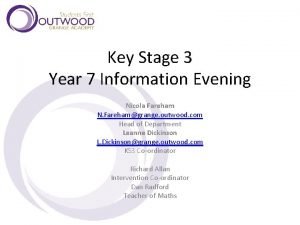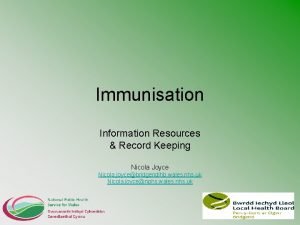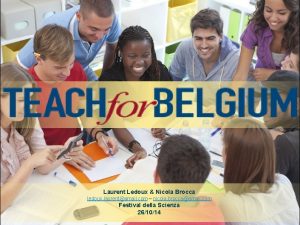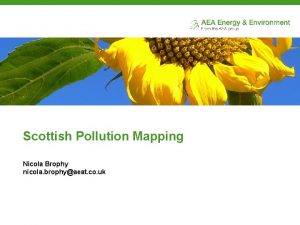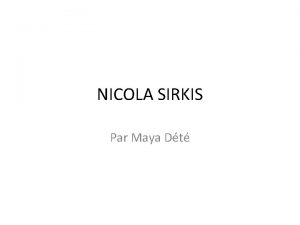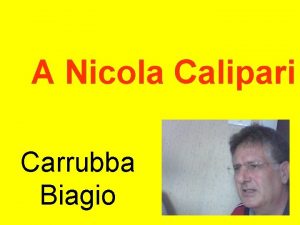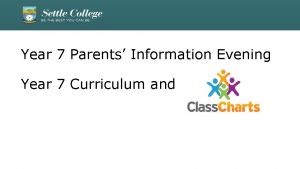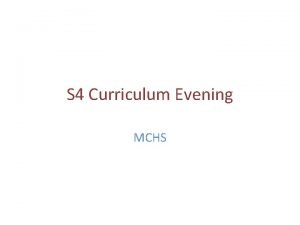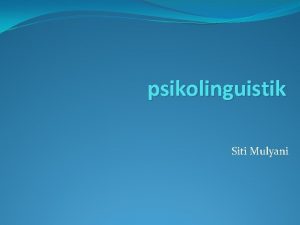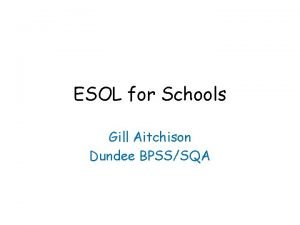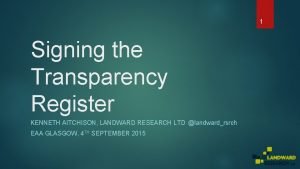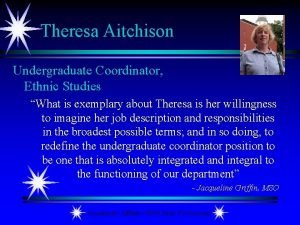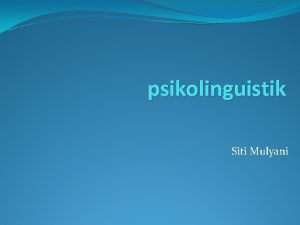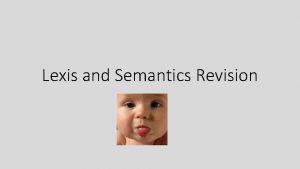Year 2 Curriculum Evening NICOLA AITCHISON LINDA HOWES









































- Slides: 41

Year 2 Curriculum Evening NICOLA AITCHISON LINDA HOWES

The Daily Routine 8. 55 am 9. 00 am - 9. 30 am - 10. 50 am - 11. 15 pm – 12. 00 pm – 1. 00 pm – 2. 30 pm – 2. 45 pm – 3: 20 pm Registration Phonics Maths 1 ST BREAK Milk time/ Snacks Guided reading/ daily tasks English LUNCH Topic 2 nd BREAK Guided reading/ Mathletics/ Story

Homework in Year 2 § Spellings – related to phonics/spelling pattern focus § Any recorded homework should be completed in their homework book with a pencil. § Work in a quiet place. Support but let your child lead. Day Daily Monday Ongoing Subject Reading Spellings Maths To be handed in Keep books in book bags Friday Ongoing

School Bag / Book Bag § The children need to have a book bag to take their homework and reading book home.

Water Bottles § Children leave their water bottles next to the sink. They can get a drink when they feel the need to. They are encouraged to take them home on a Friday to wash them. Children are encouraged to bring a water bottle to school.

Playtime Snack § Like Year 1, the children are provided with a playtime snack each day. § These are healthy snacks for example; apple, banana, pear, carrots, raisins etc. § These are stored in a box in the classroom. The children can access them on their way to the playground.

Year 2 Rewards § House points § Caterpillar § Sticker § Leaf system § Visit to Mr Humble/ Mrs Torely/ Mrs Longster § Star of the week/Star of the term §The Fantastic Four

Year 2 Curriculum Core Subjects § RE § English § Maths § Science § Computing Foundation Subjects § Physical Education § History § Geography § Art § Design & Technology § Music § French Science, History, Geography, Art and Technology form our Topic work.

Lessons in Year 2 Children are taught in structured lessons, which consists of 4 main parts: - Sharing of the AIM and Success Criteria - Whole class teaching (smartboards / powerpoints / practical and interactive) - Independent work (individual / paired / small group) - Plenary (summary of lesson) Assessment is continuous and tracked to ensure that each child’s unique needs are catered for.

Writing Focus • Vocabulary – adjectives, similes, descriptive phrases, interesting and ambitious words, verbs and adverbs • Connectives – and, but, so, then, because, if when, although, however, as well as, • Openings – First, Just then, Next, Finally, After a while, Also, Immediately, • Punctuation -. , !? “”

Writing Focus The man walked down the lane. The old man strolled down the cobbled lane. Just then the old man strolled slowly down the cobbled lane with a wooden walking stick in his hand.

Guided Reading § Every group reads for 30 minutes at least once a week. § I read with the guided group, while other children work on their ‘Daily Tasks’: Comprehension, Ipads, Spelling and Handwriting. § The book the children bring home each week has not been read before with their group.

Phonics § Children are ability grouped according to their knowledge of phonics which is assessed at the beginning of year 2 and throughout the year. We have 3 phonics groups and Key Stage One all complete phonics at the same time so that the children can work with children at a similar level. § We will continue to develop spelling patterns in Year 2, before moving onto learning more specific spelling rules, such as ‘suffixes and prefixes’, ‘plurals’ and ‘tense’.

Phonics Terminology Phonemes: The sounds in words Graphemes: The letters representing the sound Digraph: Two letters that make one sound Trigraph: Three letters that make one sound

How many phonemes? Remember that children need to be able to listen carefully in order to identify the phonemes (sounds) in words. Tap – t-a-p = 3 phonemes Play – p-l-ay = 3 phonemes Bluff – b-l-u-ff = 4 phonemes

Handwriting – Letter Formation The children are reminded to use correct formation. For a number of children the letters ‘b’ and ‘d’ are difficult for them to differentiate. A little rhyme which we find helps is; ‘d’ begins with a curly ‘c’. Also a lot of children need to learn to let ‘fall letters’ f, g, j, p, q, f all below the line. y

Handwriting – Letter Formation Children will have regular 10/15 minute handwriting lessons

Numeracy Throughout the year the children will cover all strands of mathematics ; • Using and applying mathematics • Number • Measurement • Geometry – properties of shape • Statistics Using and applying mathematics Solve one-step problems involving numbers, money or measures and time. Applying learnt knowledge in a different context Working methodically Trial and error

Number • Number and place value • Addition and subtraction • Multiplication and division (including multiplication tables 2, 5 and 10) • fractions Measurement • length (m/cm/mm), mass (kg/g), volume/capacity (l/ml), temperature (C) • Money including £ and p, combinations of coins, giving change • Time (to 5 minutes in analogue) Geometry • 2 D and 3 D shapes • Symmetry • Position, direction and movement Statistics • Pictograms, tally charts, block diagrams and simple tables • Ratioed pictograms

Calculating Strategies for adding Putting the larger number first and counting on 6 + 27 = 27 + 6 = Using knowledge of number bonds 6+8+4 =6+4+8 = 10 + 8 = 18

Addition Partitioning. . . 10 4 / 25+14= 25+10=35 35+ 4 =39 14 + 25 =

Addition 14 +25 39 14 + 25 = The new curriculum now includes vertical methods by the end of Year 3, but we will work towards this throughout the year and will only introduce this method when the children are ready.

Subtraction 30 Counting back on an empty number line 4 / 65– 34= -10 -4 31 35 -10 45 -10 55 65

Subtraction 65 – 34 = Again the new curriculum includes the vertical method by the end of the year, but PLEASE don’t attempt it at home until you see it in your child’s homework folder. 65 _ 34 31

Multiplication

Division Dot pattern grids 18 ÷ 3 = 6


An extra 5 minutes? ! It will really aid the children if they can confidently and rapidly recall number facts such as: § Number bonds to 10, 20, 100 § Counting forward/back from any number § Adding/Subtracting 1/10 § Multiplication facts for x 2, x 5, x 10 tables § Doubles and corresponding halves

Computing The children have two ICT sessions a week in the ICT room. One ICT specific lesson and another using ICT across the curriculum. Organising and storing information 2 Simple Bee bots Microsoft Office E-safety (on going) Algorithms Ipads

Religious Education is based on the new “Come and See” programme. Autumn Term Beginnings Signs & Symbols Preparations Spring Term Books Thanksgiving Opportunities Summer Term Spread the Word Rules Treasures

TERM AUTUMN 1 AUTUMN 2 SPRING 1 SPRING 2 SUMMER 1 SUMMER 2 Topic TITLE Julia Donaldson Food Chains, Poetry Arctic and Antarctica Maps, Weather, human and physical features, living things and their habitats, writing non-fiction texts Superheroes Materials, measuring, Grace Darling, superhero stories Great fire of London Writing about real events Grow your own Different types of texts, plants, healthy eating Home and Abroad Maps, weather, postcards, graphs

PE § PE lessons take place on a Monday afternoon (1 hour) § P. E kit is needed for all PE lessons. Please ensure that all items, including shoes, are labelled. § Children MUST have their PE kit § If a child has forgotten their kit they will be given a spare kit

French § The children have half an hour of French every Friday morning. § This is taught by Mrs Thomas. § As well as lots of oral work the children also learn to write simple French. Music §The children have half an hour of music also on a Friday. §This is taught by Mrs Bell.

Year 2 SATs

What are SATs? § SATs are tasks set by the government. § SATs are Standardised Assessment Tasks. § It is compulsory that all children complete the SATs tasks at the end of Year 2.

§ The focus is now on teacher assessment across the whole year and not on the SATs tasks that the children complete. § Children will still complete the tasks in May. These are used to back up and support the evidence and assessment collated across the year. § If the Teacher Assessment and SATs tasks scores differ, then the Teacher Assessment score stands.

When do the SATs take place? § The children will sit their SATs tasks during the full month of May. § The children will work on their tasks mainly in small groups. § It is important that you try not to take the children out of school during May.

SATs Tasks § The children complete SATs tasks in Maths (arithmetic and reasoning), Writing, Reading (fiction and non-fiction) and SPAG (spelling, punctuation and grammar). § The children may refer to them as quizzes.

Levels At the end of June, the children will be given a level. Emerging Expected Exceeding

Moderation of Teacher Assessments § South Tyneside LA have a team of moderators who can arrive at a school either with notification or unexpected requesting to see a child’s work and the teacher assessment scores. § They will ensure that the children have been assessed at the correct level.

Year 2 – “An open door” I am in school most mornings by 8. 30 am and usually leave at 4 pm. Please come and see me about anything that is concerning or worrying you. Please see me or contact the office to make an appointment.
 Nicola aitchison
Nicola aitchison Year 7 information evening
Year 7 information evening Damp spoon
Damp spoon Laboratorio de fotografia forense
Laboratorio de fotografia forense Accent and dialect english language a level revision
Accent and dialect english language a level revision Poem leaving primary school
Poem leaving primary school Stem curriculum victoria
Stem curriculum victoria English curriculum victoria
English curriculum victoria Liceo scientifico nicola sensale nocera inferiore
Liceo scientifico nicola sensale nocera inferiore Flat coding frame
Flat coding frame Phoebe prince
Phoebe prince Nicola lugaresi
Nicola lugaresi Nicola cezzi
Nicola cezzi Nicola cantore
Nicola cantore Nicola cezzi
Nicola cezzi Nicola tyas sex
Nicola tyas sex Nicola cezzi
Nicola cezzi Summary of superhuman by nicola yoon
Summary of superhuman by nicola yoon Nicola.szx
Nicola.szx Brent clinical commissioning group
Brent clinical commissioning group Nicola licata
Nicola licata Chapter 31 apush
Chapter 31 apush Nicola niglio
Nicola niglio Nicola cigliano
Nicola cigliano Nicola marchant
Nicola marchant Nicola morabito
Nicola morabito Ponad wszystko - nicola yoon
Ponad wszystko - nicola yoon Andrea di nicola
Andrea di nicola Nicola cezzi
Nicola cezzi Nicola de bellis
Nicola de bellis Nicola benge
Nicola benge Nicola cezzi
Nicola cezzi Nicola cezzi
Nicola cezzi Thorazine qtc prolongation
Thorazine qtc prolongation Nicola cezzi
Nicola cezzi Nicola cezzi
Nicola cezzi Nicola cezzi
Nicola cezzi Nicola holt uwe
Nicola holt uwe Nicola paul
Nicola paul Nicola humpert
Nicola humpert Nicola minafra
Nicola minafra Nicola cezzi
Nicola cezzi
